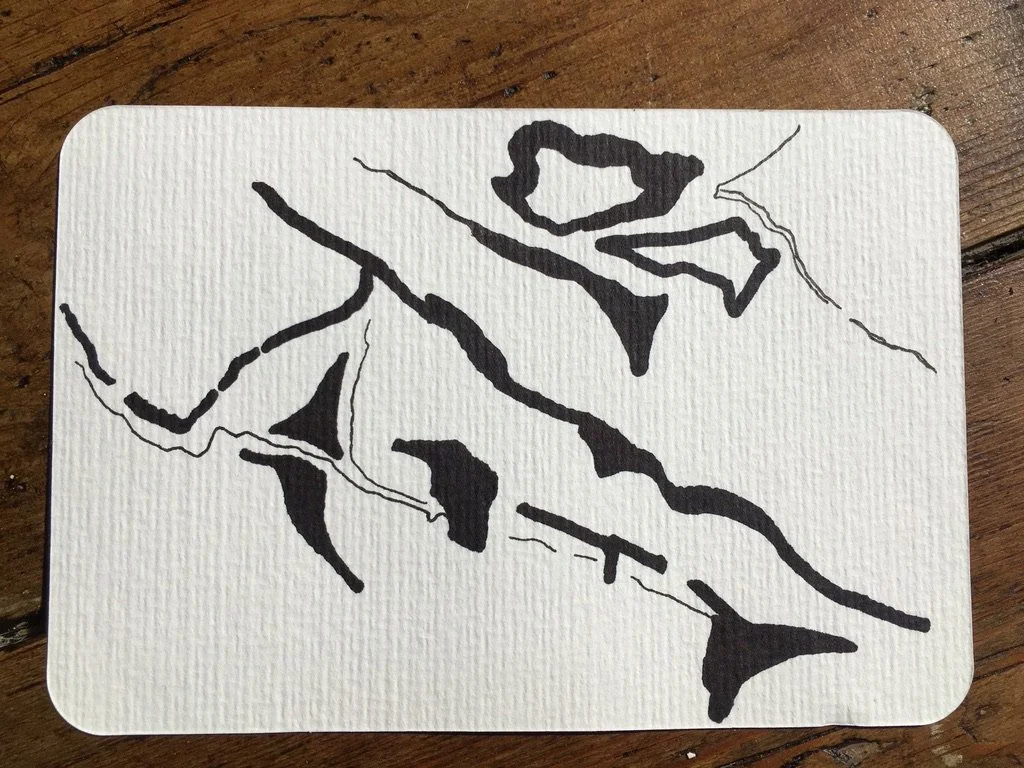Folding ‘The Fold’ into new materialism
For Deleuze the fold was a multifaceted conceptual device which he developed through the Baroque and polymath Gottfried Leibniz. Deleuze folded mathematical, philosophical and cultural theory into The Fold (2006)[1]. This process enabled multiple outcomes of meaning of ‘Baroque’ and ‘fold’ to surface. The philosophers Iris van der Tuin and Rick Dolphijn acknowledge that Deleuze started ‘exploring materialist/monist thought to the fullest, creating the fertile ground in which new materialism takes root’ (2010, p. 153).
Folding new materialism into practice
My practice is one of folding materials and thoughts through theorists, philosophers and artists, who are growing the transversal fields of new materialism. According to the philosophers Christopher N. Gamble et al., ‘new materialism embraces a non-anthropocentric realism grounded in a shift from epistemology to ontology and the recognition of matter’s intrinsic activity’ (2019, p. 118). Using a new materialist framework as the foundation of this inquiry allows a shift from human centrism entangling human and non-human matter within a neutral environment. Recognising matter as ‘active, self-creative, productive and unpredictable’ (Coole and Frost, 2010, p. 9) demands acknowledging matter as a living force beyond human control. This recognition gives material agency enabling a shift from theoretical thinking as the only source of evolving new knowledge, acknowledging materials might have something to show us. As an artist, the process of learning from materials, makes me consider what we might be if our shared environment was not so dominated by human power structures, and knowledge so controlled by written language and the spoken word.
The unfold of the fold (2023) – Lynda Beckett
Folding processes: The unfolding of making, thinking and language
As I write this text, thought and practice continuously fold/unfold/refold. The process is active/creative, as materials touch, entangle and fold with one another, forming a new language structure. The philosophers Iris van der Tuin and Rick Dolphijn, speak of new materialism as a ‘move away from linguistic representationalism’ (2010, p. 154). Tracks and Traces (no:23), a work of seemingly nonsensical staccato lines, moves away from traditional linguistic representationalism and imparts knowledge that might be sensed rather than read as an emergent form of knowledge-making.
Tracks and Traces (no:23) (2022) – Lynda Beckett
Tracks and Traces (no:23) enables me to venture into different spaces to create a new language. Perhaps this practice is a form of double articulation (Deleuze and Guattari, 1987, pp. 46–47). These marks are formed from looking at tracks and traces of matter etched into a geological environment. The structure a photograph might show is broken down to lines. The physical matter is transformed and created into abstract forms, that inform my thinking process through making, to form further content.
[1] Deleuze gave a series of lectures in the late 1980s offering a new interpretation of the baroque read through the works of Gottfried Leibniz as a process of folding thoughts. In 1991 Deleuze wrote a short paper for Yale French Studies before publishing Le Pli: Leibniz et le Baroque,1991, translated into English, 1993.

